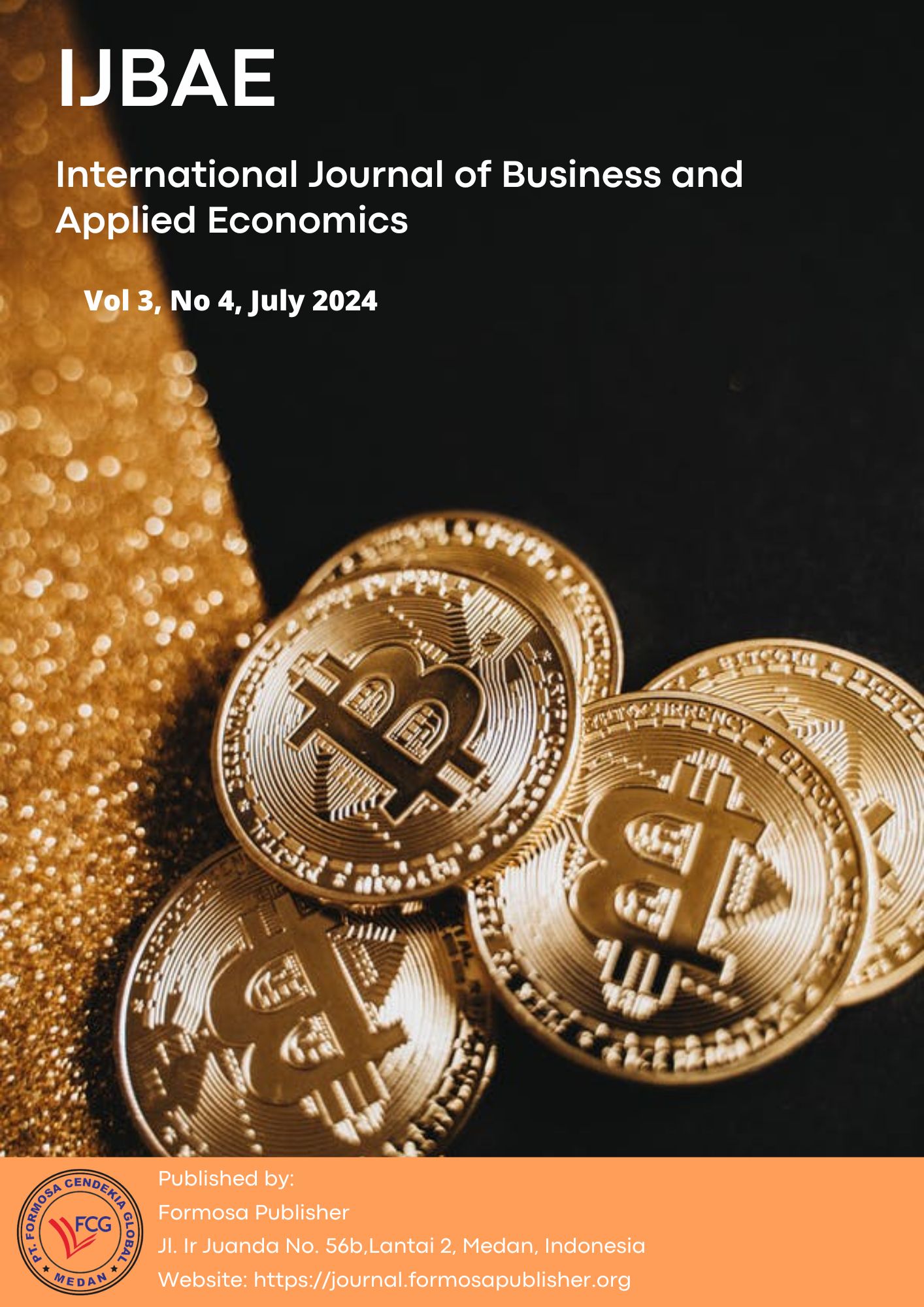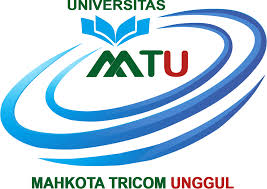Examining the Impact of Technostress on Perceived Organizational Commitment: The Mediating Role of Individual Innovation
DOI:
https://doi.org/10.55927/ijbae.v3i4.9617Keywords:
Human Resource Management, Individual Innovation, Perceived Organizational Commitment (POC), Structural Equation Modeling (SEM), TechnostressAbstract
This research examines the influence of technostress on perceived organizational commitment (POC) and investigates how individual innovation mediates this relationship. Conducted within an engineering consulting firm, the research employs structural equation modeling (SEM) to analyze data from 147 employees. The objectives include determining the extent to which technostress influences POC, assessing how individual innovation mediates this effect, and identifying strategies to mitigate technostress impacts. Findings indicate that technostress significantly negatively affects both POC and individual innovation, with the latter showing a positive correlation with POC. Moreover, individual innovation serves as a partial mediator, mitigating the adverse effects of technostress on POC. The results highlight the necessity for organizations to foster innovative cultures while managing technostress, thus promoting a resilient and committed workforce. This study contributes to the literature by integrating the constructs of technostress, innovation, and organizational commitment, providing actionable insights for managers aiming to enhance employee engagement and organizational stability.
Downloads
References
Acosta-Prado, J. C., Sanchís-Pedregosa, C., López-Montoya, O. H., Sanabria-Landazábal, N. J., & Tafur-Mendoza, A. A. (2020). Influence of intellectual property rights on innovation capability in new technology-based firms. International Journal of Intellectual Property Management, 10(3), 216-232.
Al-Jabari, B., & Ghazzawi, I. (2019). Organizational Commitment: A Review of the Conceptual and Empirical Literature and a Research Agenda. International Leadership Journal, 11(1).
Al Wali, J., Muthuveloo, R., & Teoh, A. P. (2022). Unravelling the nexus between creative self-efficacy, humble leadership, innovative work behaviour and job performance amongst physicians in public hospitals. Asia-Pacific Journal of Business Administration, 14(4), 706-726.
Aminia, A., Hatamia, L., & Shavazib, M. T. A. (2023). The Impact of Social Media Use on Job Performance: Exploring the Role of Technostress, Social Capital, and Job Satisfaction as Mediators. Journal of Systems Thinking in Practice.
Bai, A., Satarpour, M., Mohebbi, F., & Forati, A. M. (2024a). Digital Crowdsourcing and VGI: impact on information quality and business intelligence. Spatial Information Research, 1-9.
Bai, A., Vahedian, M., Bai, M., Ghahreman, R., & Piri, H. (2024b). Elevating Women in the Workplace The Dual Influence of Spiritual Intelligence and Ethical Environments on Job Satisfaction. Journal of Business Management and Economic Development, 2(02), 472-490.
Bernuzzi, C., O’shea, D., Setti, I., & Sommovigo, V. (2024). Mind your language! how and when victims of email incivility from colleagues experience work-life conflict and emotional exhaustion. Current Psychology, 1-15.
Boshoff, C., & Mels, G. (1995). A causal model to evaluate the relationships among supervision, role stress, organizational commitment and internal service quality. European Journal of Marketing, 29(2), 23-42.
Boonsiritomachai, W., & Sud-On, P. (2022). The moderation effect of work engagement on entrepreneurial attitude and organizational commitment: evidence from Thailand’s entry-level employees during the COVID-19 pandemic. Asia-Pacific Journal of Business Administration, 14(1), 50-71.
Cheah, J. H., Amaro, S., & Roldán, J. L. (2023). Multigroup analysis of more than two groups in PLS-SEM: A review, illustration, and recommendations. Journal of Business Research, 156, 113539.
Dragano, N., & Lunau, T. (2020). Technostress at work and mental health: Concepts and research results. Current Opinion in Psychiatry, 33(4), 407-413.
Düzgün, M., & Çelik, M. (2023). Antecedents of job satisfaction: A moderated mediation model. Current Psychology, 42(23), 20075-20090.
Du Plessis, M. (2007). The role of knowledge management in innovation. Journal of knowledge management, 11(4), 20-29.
Fazal‐e‐Hasan, S. M., Ahmadi, H., Sekhon, H., Mortimer, G., Sadiq, M., Kharouf, H., & Abid, M. (2023). The role of green innovation and hope in employee retention. Business Strategy and the Environment, 32(1), 220-239.
Field, A. (2024). Discovering statistics using IBM SPSS Statistics. SAGE Publications Limited.
Galay, J. A. (2022). Organizational culture, commitment and good governance of private higher education institutions: inputs to effective human resource management framework. Asia Pacific Journal of Academic Research in Business Administration, 8(1), 38-51.
Guenther, P., Guenther, M., Ringle, C. M., Zaefarian, G., & Cartwright, S. (2023). Improving PLS-SEM use for business marketing research. Industrial Marketing Management, 111, 127-142.
Guo, J., Qiu, Y., & Gan, Y. (2020). Workplace incivility and work engagement: The chain mediating effects of perceived insider status, affective organizational commitment and organizational identification. Current Psychology, 1-12.
Harish, K. A., & Prabha, B. J. (2022). Impact of transformational and transactional leadership behaviour on the organisational performance. International Journal of Intellectual Property Management, 12(3), 305-317.
Hessari, H., & Nategh, T. (2022a). Smartphone addiction can maximize or minimize job performance? Assessing the role of life invasion and techno exhaustion. Asian Journal of Business Ethics, 11(1), 159–182. https://doi.org/10.1007/s13520-022-00145-2
Hessari, H., & Nategh, T. (2022b). The role of co-worker support for tackling techno stress along with these influences on need for recovery and work motivation. International Journal of Intellectual Property Management, 12(2), 233–259. https://doi.org/10.1504/IJIPM.2022.122301
Hessari, H., Busch, P., & Smith, S. (2022c). Supportive leadership and co-worker support for nomophobia reduction: Considering affective commitment and HRM practices. ACIS 2022 Proceedings. 18. https://aisel.aisnet.org/acis2022/18
Hessari, H., Daneshmandi, F., Busch, P., & Smith, S. (2024). Workplace nomophobia: a systematic literature review. Current Psychology, 1-21. https://doi.org/10.1007/s12144-024-06222-y
Hessari, H., Daneshmandi, F., Busch, P., & Smith, S. (2024). Mitigating cyberloafing through employee adaptability: the roles of temporal leadership, teamwork attitudes and competitive work environment. Asia-Pacific Journal of Business Administration, Vol. ahead-of-print No. ahead-of-print. https://doi.org/10.1108/APJBA-02-2024-0065
Huo, W., Xu, X., Li, X., Xie, J., & Sun, L. (2023). Work-related use of information and communication technologies after-hours (W_ICTs) and employee innovation behavior: a dual-path model. Information Technology & People, 36(6), 2259-2279.
Ismail, A. A., Abdelhamid, E. H., Khalil, G. M., & Abdelsalam, N. M. (2023). Effect of technostress and work stress on the productivity of staff members of the Faculty of Medicine. The Egyptian Journal of Hospital Medicine, 90(1), 1801-1808.
Lee, M., & Kim, B. (2023). Effect of employee experience on organizational commitment: Case of South Korea. Behavioral Sciences, 13(7), 521.
Le, P. B. (2020). How transformational leadership facilitates radical and incremental innovation: the mediating role of individual psychological capital. Asia-Pacific Journal of Business Administration, 12(3/4), 205-222.
Mahanta, M., & Goswami, K. (2020). Exploring the role of ethics in the emotional intelligence-organizational commitment relationship. Asian Journal of Business Ethics, 9(2), 275-303.
Maier, C., Laumer, S., Weinert, C., & Weitzel, T. (2015). The effects of technostress and switching stress on discontinued use of social networking services: A study of Facebook use. Information Systems Journal, 25(3), 275-308.
Mani, K. P., Sritharan, R., & Gayatri, R. (2014). Impact of occupational stress on quality work life among railway station masters of Trichy division. Bonfring International Journal of Industrial Engineering and Management Science, 4(4), 165.
Marchiori, D. M., Felix, A. C. S., Popadiuk, S., Mainardes, E. W., & Rodrigues, R. G. (2020). A relationship between technostress, satisfaction at work, organizational commitment and demography: Evidence from the Brazilian public sector. Revista Gestão & Tecnologia, 20(4), 176-201.
Nastjuk, I., Trang, S., Grummeck-Braamt, J. V., Adam, M. T., & Tarafdar, M. (2024). Integrating and synthesising technostress research: a meta-analysis on technostress creators, outcomes, and IS usage contexts. European Journal of Information Systems, 33(3), 361-382.
Perry, S. J., Hunter, E. M., & Currall, S. C. (2016). Managing the innovators: Organizational and professional commitment among scientists and engineers. Research Policy, 45(6), 1247-1262.
Pratama, E. N., Suwarni, E., & Handayani, M. A. (2022). The effect of job satisfaction and organizational commitment on turnover intention with person organization fit as moderator variable. Aptisi Transactions on Management (ATM), 6(1), 74-82.
Riaz, A., Jamil, S. A., & Mahmood, S. (2023). Organizational politics and affective commitment of expatriates: moderating role of Islamic work ethics. Asian Journal of Business Ethics, 12(2), 419-439.
Riedl, R. (2012). On the biology of technostress: Literature review and research agenda. ACM SIGMIS Database: The DATABASE for Advances in Information Systems, 44(1), 18-55.
Riggle, R. J., Edmondson, D. R., & Hansen, J. D. (2009). A meta-analysis of the relationship between perceived organizational support and job outcomes: 20 years of research. Journal of Business Research, 62(10), 1027-1030.
Sarstedt, M., & Moisescu, O. I. (2024). Quantifying uncertainty in PLS-SEM-based mediation analyses. Journal of Marketing Analytics, 12(1), 87-96.
Saunila, M. (2020). Innovation capability in SMEs: A systematic review of the literature. Journal of Innovation & Knowledge, 5(4), 260-265.
Siddiqui, S., Arif, I., & Hinduja, P. (2023). Technostress: A catalyst to leave the teaching profession-A survey designed to measure technostress among teachers in Pakistan during COVID-19 pandemic. E-learning and Digital Media, 20(1), 53-79.
Susanto, P. C., Syailendra, S., & Suryawan, R. F. (2023). Determination of motivation and performance: Analysis of job satisfaction, employee engagement and leadership. International Journal of Business and Applied Economics, 2(2), 59-68.
Suwarno, S., Kesuma, I. M., Aprianto, R., Anggraini, S., Nuraini, B., Paleni, H., & Surajiyo, S. (2023). Perceived Organization Support and Work Engagement toward Employee Performance with Motivation as Mediating Variable. Journal of Business Management and Economic Development, 1(02), 230-239.
Tyoso, J. S. P., Sukardi, S., & Mahesa, D. (2024). Analysis of Communication, Knowledge Management, Teamwork, Ability, and Performance of Private Sector Employees in the City of Semarang. Journal of Business Management and Economic Development, 2(01), 354-370.
Valta, M., Hildebrandt, Y., &
Maier, C. (2024). Fostering the digital mindset to mitigate technostress: an empirical study of empowering individuals for using digital technologies. Internet Research.
Widjaja, A. (2023). Antecedent Organizational Commitment Approach that Affects Employee Engagement. International Journal of Business and Applied Economics, 2(2), 177-192.
Ye, P., Liu, L., & Tan, J. (2023). The influence of organisational justice and ethical leadership on employees’ innovation behaviour. European Journal of Innovation Management, 26(4), 1129-1149.
Downloads
Published
How to Cite
Issue
Section
License
Copyright (c) 2024 Hassan Hessari, Fatemeh Daneshmandi, Tahmineh Nategh

This work is licensed under a Creative Commons Attribution 4.0 International License.

























